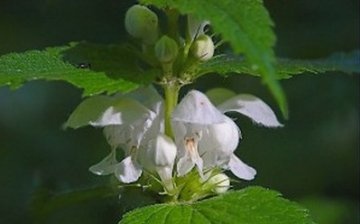White lamb and its use in folk medicine and cooking
White lamb is a plant known to everyone. People also call it cuckoo, white or deaf nettle for its striking resemblance to this species. The only difference is that after contact with it, your skin will not be covered with red dots and will not start to burn unbearably. In addition, during flowering, small white or slightly yellowish flowers bloom in the axils of the upper leaves.
Fresh white lamb (or rather, its flowers and leaves crushed to a mushy state, as well as juice) is used to treat a variety of skin diseases and lesions, including abscesses, ulcers, wounds, inflammation, acne and even boils. Inflammation of the joints is significantly reduced after compresses and poultices from the lamb, and nervous excitement and insomnia recede after taking a tablespoon of fresh juice. In addition, juice and decoction made from leaves and flowers are used to increase appetite. The presence of saponins and mucus in the juice of the plant makes it an effective means of combating bronchial asthma, bronchitis, cough and other ailments of the respiratory tract. As a rule, in such cases, the most effective is an infusion of dried flowers or leaves filled with a glass of boiling water.
White lamb is also used by many chefs for making soups, salads, vinaigrette and various main courses. Its dried and crushed leaves make an excellent seasoning, and from flowers mixed with thyme, St. John's wort and fireweed, you can brew a very fragrant and healthy herbal tea.



